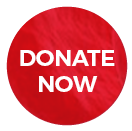I started having superficial clots (SVTs) in the early 1990s, which was attributed to birth control. Genetic testing was not available at that time. I joined a list serve (email group) to learn more.
Fifteen years later, with occasional SVTs and genetic testing now available, I was diagnosed with one factor V Leiden gene (heterozygous). In 2012, I had classic DVT symptoms: a very swollen and blue leg, which came two days after recovering from a bout of food poisoning and a day of hiking where immobility and dehydration had likely increased my clot risk.
The folks on that list serve encouraged me to get to the ER and told me to insist on having a catheter-directed thrombolysis ASAP to break up the clot. I know that advice is why my post-thrombotic syndrome symptoms are minimal.
May-Thurner syndrome was found during that procedure and corrected with two stents. I’ve had two subsequent DVTs and one PE after a bit of medical gaslighting. My hematologist and chiropractor both knew my clot history and genetic predisposition to clotting, but when I saw them complaining of rib pain with a deep breath, neither checked for a PE. A very painful 36 hours later, I was diagnosed with a PE in the ER.
I am thankful to have received treatment pretty quickly, mostly due to my self-advocating. I also learned that dehydration is something that triggers my clot episodes.
Today, I am blessed to have my health. I walk 2-4 miles daily, hike, downhill ski, and scuba dive, albeit a tad more conservatively than to lower my fall risk now that I take a DOAC (blood thinner).
I am happy to give back to the NBCA as a Thrombassador. The more people who know about clot symptoms and risks, the sooner those affected can get the help needed to live their best life. Knowing the symptoms, your risk factors, and self-advocacy are the keys to clot prevention and healing.




